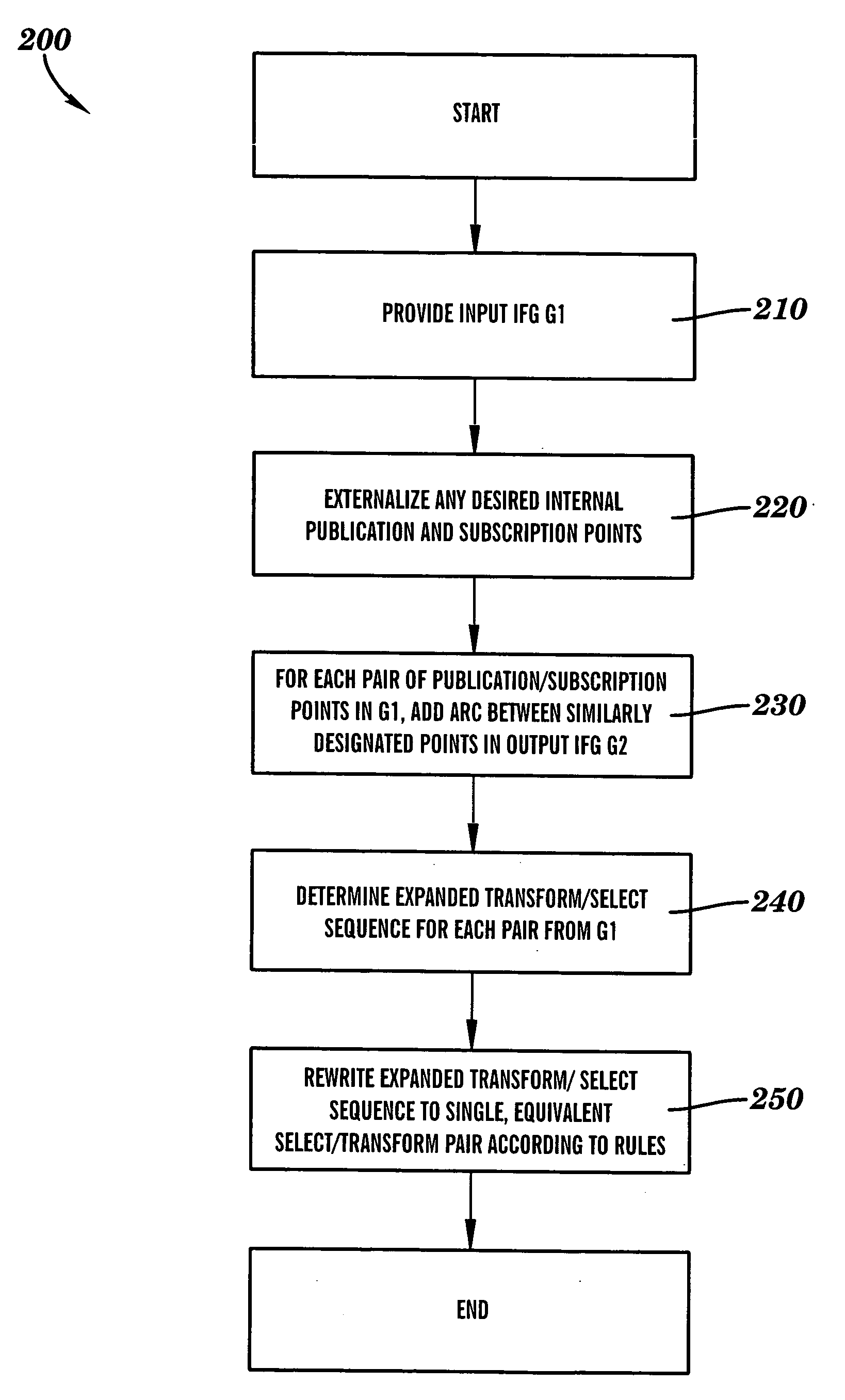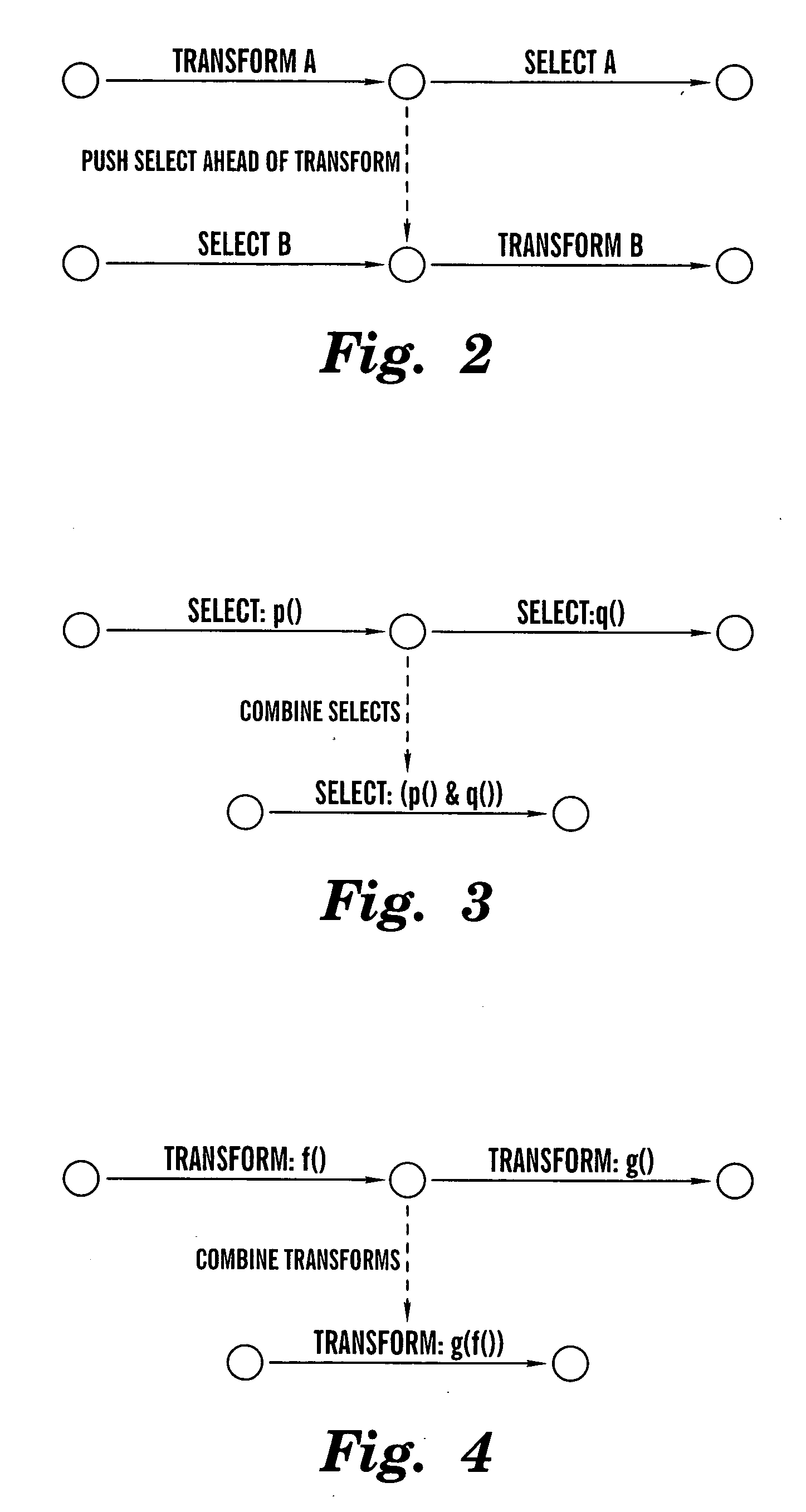Reduction and optimization of information processing systems
a technology of information processing system and optimization, applied in the direction of multi-programming arrangement, program control, instruments, etc., to achieve the effect of expanding the range of application
- Summary
- Abstract
- Description
- Claims
- Application Information
AI Technical Summary
Benefits of technology
Problems solved by technology
Method used
Image
Examples
Embodiment Construction
[0061]
2 input message: { LO_TEMP_F:41 HI_TEMP_F:59 DATE:"1998.53" } transform: [AVG_TEMP_C:=(((LO_TEMP_F+HI_TEMP_F) / 2-32)*(5 / 9)) DATE:=DATE] output message: { AVG_TEMP_C:10 DATE:"1998.53" }
[0062] Selects Can Be Pushed Ahead of Transforms:
[0063] For any dataflow in which a transform TransformA is followed by select SelectB, there is an equivalent dataflow of the form SelectB followed by TransformB. Observing that the predicate of SelectA must be a function of constants and the function outputs of TransformA, a predicate for SelectB is constructed that will choose the same messages as SelectA, by substituting the appropriate functions of TransformA for the attributes in the predicate of SelectA.
[0064] For example, for a dataflow in the form:
[0065] Stream_IN.fwdarw.TranformA.fwdarw.SelectA.fwdarw.Stream_OUT
[0066] there is an equivalent dataflow of the form:
[0067] Stream_IN.fwdarw.SelectB.fwdarw.TransformB.fwdarw.Stream_OUT
[0068] shown diagrammatically in FIG. 2.
[0069] By observing tha...
PUM
 Login to View More
Login to View More Abstract
Description
Claims
Application Information
 Login to View More
Login to View More - R&D
- Intellectual Property
- Life Sciences
- Materials
- Tech Scout
- Unparalleled Data Quality
- Higher Quality Content
- 60% Fewer Hallucinations
Browse by: Latest US Patents, China's latest patents, Technical Efficacy Thesaurus, Application Domain, Technology Topic, Popular Technical Reports.
© 2025 PatSnap. All rights reserved.Legal|Privacy policy|Modern Slavery Act Transparency Statement|Sitemap|About US| Contact US: help@patsnap.com



